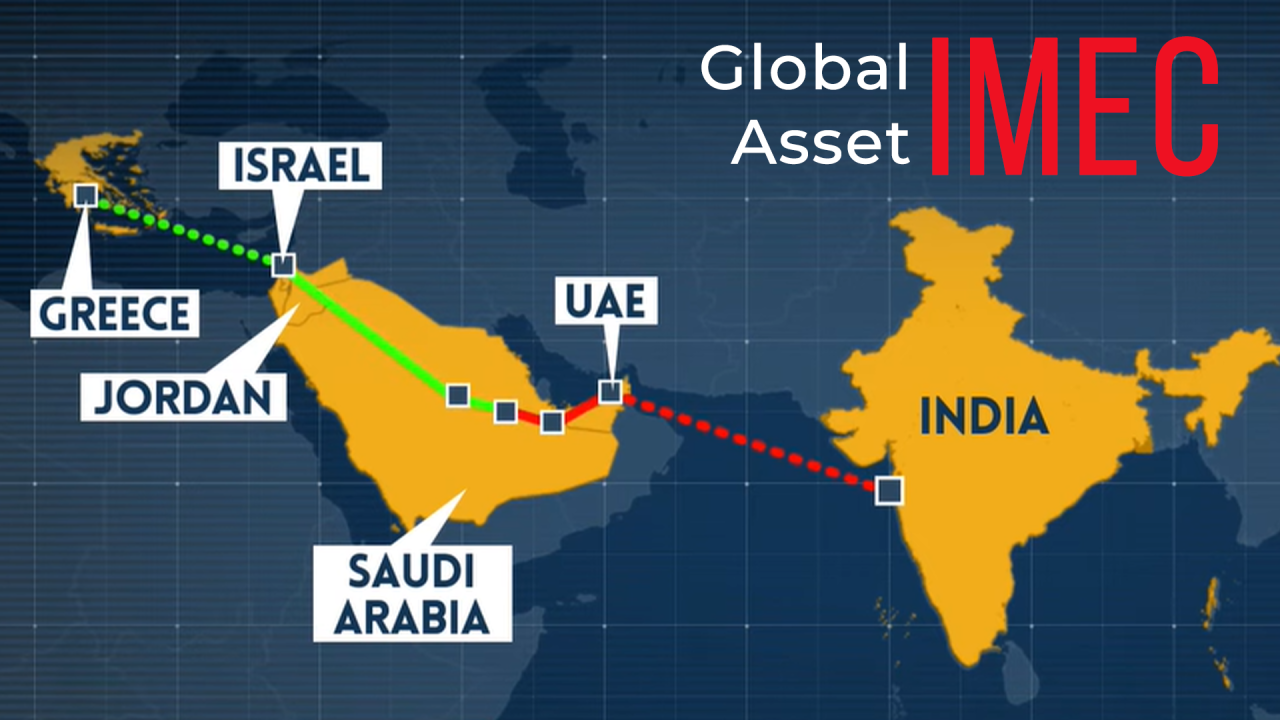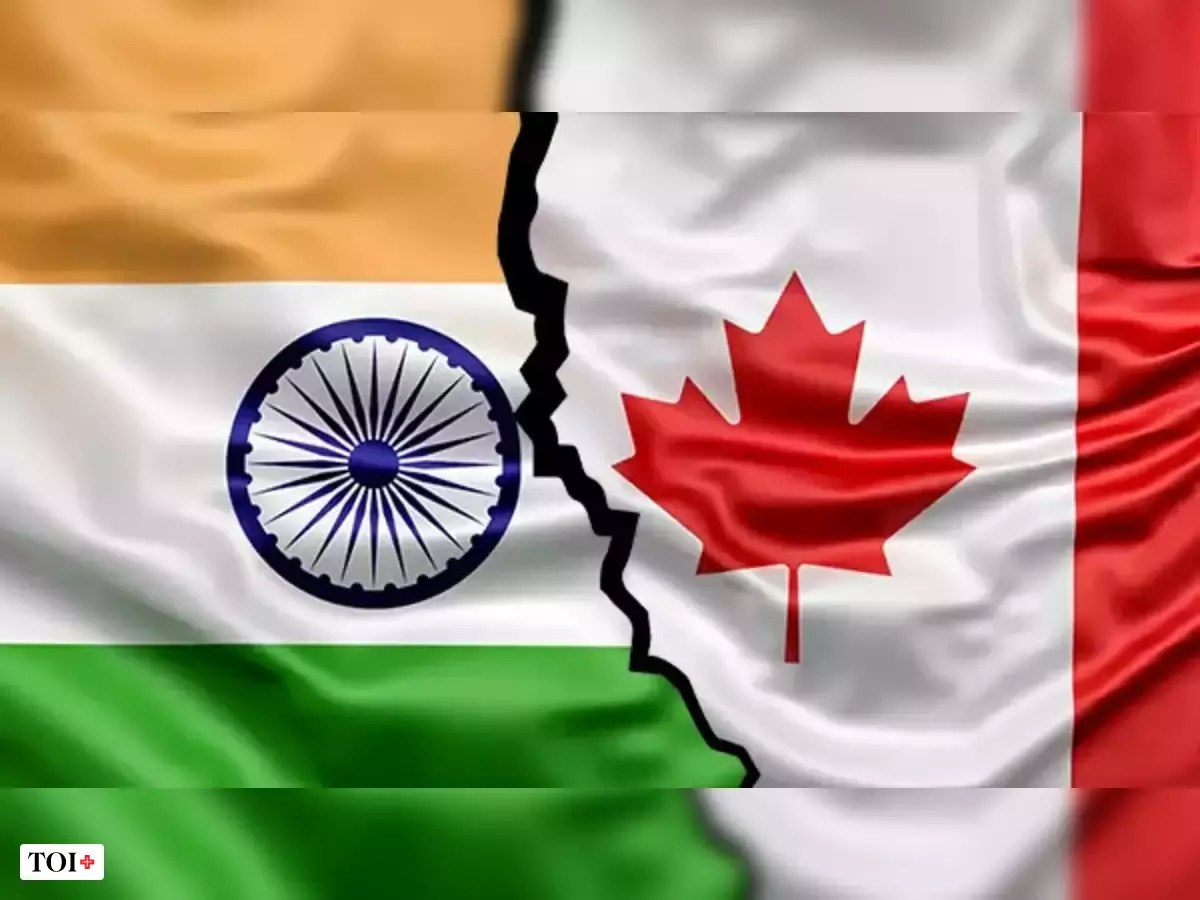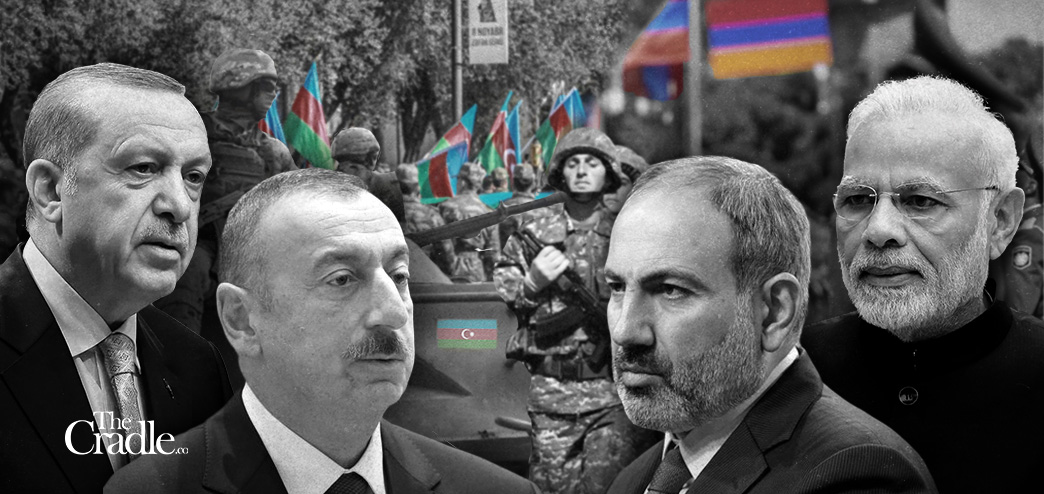A geopolitical game-changer for the 21st century is the India-Middle East-Europe Corridor or IMEC for short. The transportation of products and energy resources between India, the Middle East, and Europe is expected to change as a result of this large-scale infrastructure project. In addition to its economic importance, the IMEC has the ability to alter regional alignments, ease geopolitical tensions, and promote increased collaboration among countries along its route. In this post, we explore the reasons the IMEC is positioned to take center stage on the international scene.
The agreement made to construct the India-Middle East-Europe (IMEC) corridor was the primary result of the G20 conference earlier this month. According to the MoU, the corridor’s blueprint would be ready in 60 days. That’s right before the G20’s fictitious meeting on November 30, 2023, which will formally conclude India’s one-year presidency.
The IMEC will have significant geopolitical and geoeconomic repercussions. It will result in a surge in the construction of marine terminals, railroads, roads, and underwater cables for renewable energy. The expansion of seaports along India’s western coast will include both greenfield and brownfield projects. Indian businesses are well suited to land contracts for the construction of rail and road projects from the Middle Eastern nations of the United Arab Emirates, Saudi Arabia, and Jordan to Israel’s Mediterranean ports.
A direct rail and road route through Jordan from Saudi Arabia to Israel’s shore can be established once diplomatic relations between Israel and Saudi Arabia are formalized. Since the MoU has the support of both the US and the EU, IMEC has powerful financial backing. Along with Saudi Arabia, the UAE, and India, the three largest economies in Europe—Germany, France, and Italy—are signatories in their sovereign capacities.
The European Council on Foreign Relations (ECFR) typically opposes direct infrastructural connections between Western Europe and South Asia. However, even the council admitted as much in a briefing note provided on September 15, 2023, by its director for the Middle East and North Africa program Julien Barnes-Dacey and visiting fellow Cinzia Bianco: “The European Commission president Ursula von der Leyen has hailed the G20 announcement establishing the India-Middle East-Europe economic corridor (IMEC) as a historic breakthrough. The project proposes to construct a railway from India to Europe via Jordan and Israel, as well as digital and electric connections, clean hydrogen pipelines, and other infrastructure.
The discrepancy between Western perceptions of the multipolar world and those of important Gulf actors will be soon brought to light by IMEC. Offering an alternative to Beijing’s Belt and Road Initiative (BRI), the West is confident that it can continue to bolster its regional influence at China’s expense. However, Gulf actors see this accord as part of a new world order where they may strike a balance between their relations with China and the West in order to maximize their own benefits.
The re-establishment of diplomatic ties between Saudi Arabia and Israel is necessary for almost frictionless cargo transportation through IMEC. Although the ice is melting, they do not have official relations. The 2020 Abraham Accords, which improved ties between Bahrain, the UAE, and Israel, were not ratified by Saudi Arabia. Additionally, it is not a member of I2U2, a group established in 2021 by the US, Israel, the UAE, and India for a deeper level of cooperation in six areas, including energy and transportation.
The corridor is a plug-and-play initiative for India. The West Asian nations will invest a significant amount of money. However, it might be used to further integrate the economies of South Asia.
It is beyond dispute that the IMEC corridor has benefited the Indian economy. The spin-off advantages to the Indian economy will manifest in a number of different ways, in addition to strengthening India’s status as a logistics hub for the Middle East and Western Europe. India’s exports will become more organized. The IMEC corridor will reduce logistics expenses for both Indian exports and imports once it is fully constructed.
The true effect of IMEC, however, is geopolitical. IMEC offers an alternative route from east to west as countries taking part in China’s Belt and Road Initiative (BRI) struggle with debt. The BRI is intended to span Eurasia, go via the Middle East, and then continue on to Europe. It would travel via Gilgit-Baltistan, which Pakistan has unlawfully invaded, and PoK, which is sovereign Indian territory.
When its five-year deal with China expires in April 2024, Italy is scheduled to leave the BRI. At the G20 summit in New Delhi, Italian Prime Minister Giorgia Meloni informed Chinese Prime Minister Li Qiang that the BRI agreement would not be renewed. Italy’s withdrawal from the BRI will be a setback to Beijing’s ambitions to revitalize the stalled program, as it was the first and only Western European nation to sign up for the initiative in 2019.
Evidently, India is not placing all of its geoeconomic eggs in the IMEC basket. In the Andaman and Nicobar Islands, it is simultaneously creating a critical military and civil maritime corridor for the Indo-Pacific region. Environmentalists and the National Green Tribunal (NGT) have criticized the Great Nicobar project, which cost 72,000 crores of rupees. As a result, all buildings were put on hold. A team of specialists examined these issues and, as required, this month approved the Great Nicobar project.
The purpose of this project is to give India the ability to leverage a sizeable portion of the regional marine economy by taking advantage of its geographic access to important shipping routes between East Asia and South Asia as well as major trading hubs like Colombo, Port Klang, and Singapore. Due to the possibility of shipping container costs being reduced, the geographic proximity will have a significant positive economic impact.
It has been planned to establish the projected Great Nicobar Island International Airport (GNIIA) as an international airport in Great Nicobar. The airstrip should be constructed to accommodate Airbus A-380-type operations in all weather scenarios.
The South Pacific Sea will now be accessible to both military and civilian aircraft. Just over 100 miles from the tip of Indonesia, the extended Indian naval outpost on the Great Nicobar overlooks the entrance to the Strait of Malacca, through which the majority of China’s trade travels.
India will be able to cut a path from Western Europe via North Africa, the Middle East, and on to the Indian Ocean, East Asia, and the South Pacific Sea because of the combined effects of IMEC and the Great Nicobar Project. The two projects’ advantages will restore India to the trading power it enjoyed for centuries before the arrival of European colonization. The situation has changed.
The India-Middle East-Europe Corridor is more than just a transportation route; it is a geopolitical gamechanger. By connecting India, the Middle East, and Europe, it has the potential to reshape regional dynamics, foster economic growth, enhance energy security, and promote diplomacy and cooperation. As this corridor continues to develop, it will be fascinating to observe how it shapes the geopolitical landscape and contributes to a more interconnected and peaceful world.








